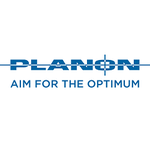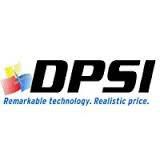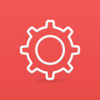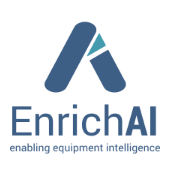What Is Plant Maintenance Software?
Plant maintenance software is a specialist application that automates and optimizes the maintenance process for industrial plants, factories, and manufacturing facilities. It allows businesses to manage and track equipment maintenance, repairs, and overall asset performance in a centralized system, resulting in increased productivity, lower downtime, and cost savings.
This program includes a variety of capabilities like as work order administration, preventative maintenance scheduling, inventory management, asset tracking, and real-time monitoring of equipment health. It also enables the integration of data from a variety of sources, including sensors and IoT devices, to provide a complete picture of plant operations.
Plant maintenance software enables firms to create and assign work orders, track job status, and schedule maintenance tasks based on equipment usage and performance data. This not only reduces unexpected malfunctions, but also increases asset longevity, minimizing the need for regular replacements and repairs.Furthermore, the program provides maintenance planners and managers with vital insights into equipment performance via comprehensive analytics and reporting features.
This assists in spotting possible flaws before they become critical, allowing for preventive maintenance and eliminating costly downtime. Furthermore, the software has a user-friendly design and can be accessed on a variety of devices, facilitating collaboration and communication across maintenance crews. It also interfaces with other corporate systems, such as inventory management and accounting, to ensure a continuous flow of data and effective decision-making.
What Are The Recent Trends In Plant Maintenance Software?
Plant maintenance has been rapidly evolving in response to technological and automation improvements. This has resulted in the development of a variety of software solutions to meet plant maintenance requirements. With the growing demand for efficient and cost-effective maintenance operations, plant maintenance software has become an essential tool for organizations.
Let's look at some of the latest advancements in plant maintenance software.
1. Mobile accessibility: With the increased usage of smartphones and tablets, plant maintenance software has become more mobile-friendly. This enables technicians to access the program from anywhere and at any time, making maintenance activities more efficient. Mobile accessibility also allows for real-time updates and faster reaction to issues, ultimately improving the overall maintenance process.
2. Cloud-based solutions: Cloud-based plant maintenance software has grown in popularity in recent years due to its ease of use and low cost. These solutions eliminate the need for on-site servers and IT support, which reduces corporate maintenance costs. Furthermore, cloud-based software offers real-time data and analytics, allowing firms to make more informed decisions.
3. Integration with IoT: The Internet of Things (IoT) has transformed plant maintenance by allowing for remote monitoring and predictive maintenance. Plant maintenance software that connects with IoT devices can gather data from equipment sensors and utilize it to forecast probable faults and avoid breakdowns. This not only lowers downtime but also increases the longevity of the equipment.
4. Artificial Intelligence (AI) And Machine Learning (ML): Artificial Intelligence (AI) And Machine Learning (ML) are revolutionizing maintenance practices. Plant maintenance software can employ AI and machine learning to evaluate data and patterns in order to predict maintenance requirements, schedule maintenance jobs, and optimize inventory levels. This helps organizations save time and money by streamlining maintenance procedures.
5. User-Friendly Interface: User adoption is vital to the success of any software. Plant maintenance software suppliers are continually upgrading the user interface and experience to make it more intuitive and usable. This enables technicians with less training to effectively use the program, decreasing errors and increasing efficiency.
Benefits Of Using Plant Maintenance Software
Plant maintenance software is a valuable tool for streamlining and automating the maintenance process for many types of plants, factories, and facilities. It provides a comprehensive solution for managing and tracking maintenance jobs, schedules, and assets, resulting in higher efficiency, less downtime, and better overall performance.
Here are some of the major advantages of adopting plant maintenance software.
1. Improved Maintenance: Planning and Scheduling Plant maintenance software enables you to arrange preventive maintenance chores based on real-time data and equipment usage, as opposed to traditional time-based schedules. This strategy prevents unnecessary maintenance, lowers downtime, and ensures that important equipment is constantly in top shape. You can also plan and schedule maintenance work ahead of time, allowing for more efficient resource allocation and minimizing equipment malfunctions.
2. Comprehensive Equipment And Asset Management: One of the most significant advantages of employing plant maintenance software is its capacity to track and manage equipment and assets efficiently. It offers a consolidated database for storing all important data, including equipment specifications, maintenance history, and warranty information. This feature allows users to track the performance of each asset, identify potential faults, and make informed maintenance and replacement decisions.
3. Improved Equipment Reliability And Performance: Plant maintenance software assists in identifying and addressing possible issues before they progress into serious problems when used on a regular basis. It ensures that equipment is properly maintained, which extends its lifespan and improves overall performance. As a result, the likelihood of equipment breakdowns and unexpected downtime is greatly decreased, resulting in increased productivity and cost savings.
4. Real-time Data And Analytics: Plant maintenance software collects and analyzes real-time data from equipment and assets, providing useful information on their performance, maintenance requirements, and energy use. This data allows you to spot patterns and trends, target areas for improvement, and make data-driven decisions to optimize maintenance operations and save money.
5. Improved Communication And Collaboration: Plant maintenance software enables smooth communication and collaboration among maintenance personnel, management, and other stakeholders. It offers a consolidated platform for assigning and tracking maintenance activities, sharing real-time updates and data, and providing transparency into the maintenance process.This function enhances cooperation, closes communication gaps, and streamlines the maintenance workflow.
Important Factors To Consider While Purchasing Plant Maintenance Software?
When it comes to choosing plant maintenance software, several crucial considerations must be examined to ensure that you make the greatest decision for your company.
The following are significant considerations to consider while assessing various plant maintenance software options:
1. individual Maintenance Needs: The first step in choosing the proper software is determining your individual maintenance needs and requirements. This can include the type and size of your plant, the maintenance chores required, and any specific procedures or issues that your facility may face. This will allow you to narrow down your selections and select software that is specific to your requirements.
2. Features And Functionality: Because different plant maintenance software packages provide different features and functionalities, it is critical to compare them. Key elements to consider are asset management, work order management, inventory management, preventative maintenance scheduling, and reporting capabilities. Make a list of the features that are crucial to your operations and compare them to other software solutions.
3. User-Friendly Interface: The software's interface should be simple to use and understand. It should also have a straightforward and well-organized layout to assist your employees learn faster and work more efficiently.
4. Integration With Existing Systems: It is critical to select software that works seamlessly with any existing systems or software in your company. This will help to streamline processes and prevent compatibility difficulties down the line.
5. Mobile Access: With the growing popularity of remote work and on-the-go operations, having plant maintenance software that supports mobile access is advantageous. This lets your maintenance crew to view and update information from anywhere, saving time and increasing efficiency.
6. Scalability: As your company expands, your maintenance requirements may also increase. As a result, it is critical to select software that can scale with your organization, allowing you to add new features or users as needed.
7. Cost: When comparing software options, examine the total cost, which includes any upfront fees, subscription fees, and additional charges for upgrades or customization. Make sure you calculate the software's return on investment and any potential maintenance cost savings.
8. Customer Support: A dependable customer service system is essential for any software purchase. Look for a vendor who provides timely and helpful customer service to resolve any difficulties or complaints that may occur.
What Are The Key Features To Look For In Plant Maintenance Software?
Manufacturing and industrial firms rely heavily on plant maintenance software. It aids in the management of maintenance, repair, and operations (MRO) activities for production-related equipment and machinery. However, with so many options available on the market, selecting the proper software can be intimidating.
To help you make an informed decision, these are the major characteristics to look for when purchasing plant maintenance software.
1. Customizable Maintenance Plans: The software should allow you to generate unique maintenance plans based on your plant's specific requirements. This includes creating maintenance schedules, assigning tasks, and monitoring progress. It should also be able to adjust to changing plant processes or equipment.
2. Work Order Management: Effective work order management is critical to plant maintenance. The program should allow you to generate, assign, and track work orders, as well as prioritize them according to urgency and criticality. It should also have the ability to automatically generate work orders based on maintenance schedules.
3. Inventory Management: Maintenance tasks necessitate a wide range of tools, spare parts, and consumables. The software should have a strong inventory management system that monitors the availability of these items, notifies when stocks are low, and allows for easy replenishment.
4. Asset Tracking: Comprehensive plant maintenance software should be capable of tracking all assets, such as equipment, machinery, and tools. This involves documenting maintenance history, tracking usage and performance statistics, and offering insights to improve asset management.
5. Mobile Accessibility: In today's fast-paced environment, having access to software on the go is critical. The program should have a mobile or web application that allows maintenance technicians to see work orders, update statuses, and record maintenance data from anywhere.
6. Integration With Other Systems: Most facilities utilize a variety of business systems, including ERP and CMMS. The maintenance software should be able to interface with various systems, streamlining operations and data flow. This results in a more effective and comprehensive approach to plant maintenance.
7. Reporting And Analytics: Data is essential for making sound decisions about plant maintenance. The software should have strong reporting and analytical capabilities, allowing you to analyze key performance indicators, spot trends, and make data-driven decisions to enhance maintenance operations and reduce costs.
Why Do Businesses Need Plant Maintenance Software?
Businesses in the manufacturing and industrial sectors rely largely on the proper operation of their plants and equipment to reach production targets and remain profitable. Any disruptions or breakdowns in machinery can cause costly downtime, production delays, and, eventually, revenue loss. Here's where plant maintenance software comes in.
It is a specialist tool for streamlining and optimizing industrial plant maintenance processes. It allows firms to track, manage, and maintain their assets in a methodical and cost-effective way. One of the primary benefits of adopting plant maintenance software is the ability to schedule and plan maintenance tasks ahead of time.
Businesses may avoid unexpected breakdowns and extend the life of their assets by monitoring and servicing equipment on a regular basis. This not only lowers downtime, but also helps to prevent expensive maintenance or replacement expenditures. Another significant advantage of plant maintenance software is its ability to centralize and organize all maintenance-related information. This comprises equipment specifications, maintenance schedules, service histories, and work orders.
With all of this information at their fingertips, organizations can make informed decisions about their maintenance operations, spot patterns of reoccurring difficulties, and allocate resources more efficiently. Furthermore, plant maintenance software provides real-time visibility into the health and performance of industrial assets via predictive maintenance.
This enables firms to discover probable breakdowns or performance difficulties in advance, resulting in preventive interventions and minimal disruptions in production. Furthermore, with comprehensive analytics and reporting capabilities, plant maintenance software provides vital insights into the overall health of the facility and its equipment. Businesses can utilize this data to find areas for improvement, optimize maintenance operations, and make long-term strategic decisions.
How Much Time Is Required To Implement Plant Maintenance Software?
The implementation time for plant maintenance software varies according to your organization's individual demands and requirements. On average, the implementation procedure can last from a few weeks to a few months. First and foremost, it is critical to understand that deploying plant maintenance software is not a one-size-fits-all approach.
Each corporation has its own unique set of processes and systems in place, hence the implementation time varies by company. The time required for installation is also determined by the size and complexity of your firm. Smaller businesses with fewer assets and simpler systems may be able to install the program faster than larger enterprises.
However, larger companies may have specialized staff and a more established project management procedure, which can help shorten the implementation duration. Furthermore, the customization and setup of the program contribute significantly to the implementation time. While some off-the-shelf solutions may require minimal adaptation, others may need to be adjusted to your organization's specific requirements, which might increase installation time.
It is also important to examine your organization's readiness for the implementation process. If your organization lacks the appropriate data and procedures, it may take longer to prepare for software integration. It is essential that you engage together with your software vendor to create a realistic implementation timeframe and ensure a smooth transition. The software vendor can offer assistance and support throughout the process, helping to speed the implementation and reduce disruption to your business operations.
What Is The Level Of Customization Available In Plant Maintenance Software?
Plant maintenance software is highly customizable to fit the specific demands of each organization. The level of customisation available is determined upon the program supplier and the individual capabilities offered. However, most plant maintenance software provides a high level of customization, allowing organizations to adjust it to their specific needs. The capacity to design and alter workflows is a key feature of plant maintenance software that allows for customization.
This allows firms to build effective processes that are consistent with their plant maintenance procedures and needs. Furthermore, many software suppliers include a drag-and-drop interface, allowing organizations to design workflows without requiring technical skills. Another important component of customisation is the ability to design custom fields and data forms. This enables firms to collect and arrange data based on their own requirements.
For example, a manufacturing plant may require different data fields than a pharmaceutical factory, and the software should be able to handle these changes. Furthermore, plant maintenance software frequently enables firms to establish and monitor their own key performance indicators (KPIs). This enables organizations to analyze and improve their maintenance procedures based on their specific goals and objectives.
Customizable dashboards and reporting capabilities improve the capacity to measure and evaluate KPIs. Aside from these basic features, some software suppliers include advanced customization possibilities, such as the ability to insert custom programs and scripts. This enables enterprises to link the software with existing systems and tools, significantly reducing maintenance operations.
Which Industries Can Benefit The Most From Plant Maintenance Software?
Plant maintenance software is an invaluable resource for organizations in a variety of industries, providing them with the tools they need to successfully manage their assets and equipment. Plant maintenance software can help a wide range of businesses, from manufacturing and oil refineries to hospitals and universities. Manufacturing is a sector that can considerably benefit from plant maintenance software.
With so much equipment and machinery that needs to be maintained and repaired on a regular basis, manufacturers often find it difficult to keep track of it all manually. Plant maintenance software automates maintenance schedules, tracks inventory and replacement parts, and provides real-time information on equipment performance.
This not only improves overall equipment performance, but it also lowers downtime and prevents unexpected malfunctions, resulting in higher production and cost savings. The energy business can also benefit from plant maintenance software. Oil and gas, renewable energy, and utilities all rely heavily on equipment and assets to run successfully.
Plant maintenance software can assist energy businesses in monitoring the status of their assets, scheduling preventive maintenance, and identifying possible concerns before they become big problems. This leads to improved asset utilization, lower downtime, and longer equipment life, all of which are critical for a smooth and successful operation. Hospitals and healthcare facilities might also benefit from using plant maintenance software.
Critical equipment such as MRI machines, X-ray machines, and surgical equipment must always be in good working order, thus any breakdown might have significant effects. Plant maintenance software can assist healthcare facilities in managing their equipment inventory, scheduling preventative maintenance, and tracking the maintenance history of individual assets. This not only assures patient safety and well-being, but it also increases the healthcare facility's efficiency.
Finally, educational organizations like universities can benefit from plant maintenance software. With a huge campus and multiple buildings, colleges have a diverse range of equipment, from HVAC systems to laboratory equipment, that requires regular maintenance. Plant maintenance software can assist colleges in managing maintenance schedules, monitoring equipment performance, and ensuring the safety of students and staff. It also lowers costs by lowering the need for emergency maintenance and asset replacement.
Conclusion
After a thorough examination of numerous plant maintenance software solutions, it is evident that this sort of software is required for streamlining and optimizing maintenance procedures in any plant or facility. The advantages of using plant maintenance software are numerous, ranging from higher efficiency and production to cost savings and longer equipment lifespan.
When choosing the best software for your individual requirements, you should evaluate features and functions, ease of use, compatibility with existing systems, and customer support services. It is also critical to consider your budget and select software that provides the most value for your money.
Furthermore, it is advisable to choose configurable and scalable software that can grow with your company and adapt to changing requirements. Other crucial characteristics to look for are real-time data tracking, preventive maintenance capabilities, and mobile accessibility. Remember that the correct plant maintenance software can dramatically improve overall plant operations and help your organization succeed.
So, don't be afraid to conduct extensive study and compare several solutions to locate the best fit for your plant maintenance requirements. We hope this buyer's guide helped you make an informed selection. Happy shopping!






















